Watercourses Gey Ben Hinnom Stream | ||
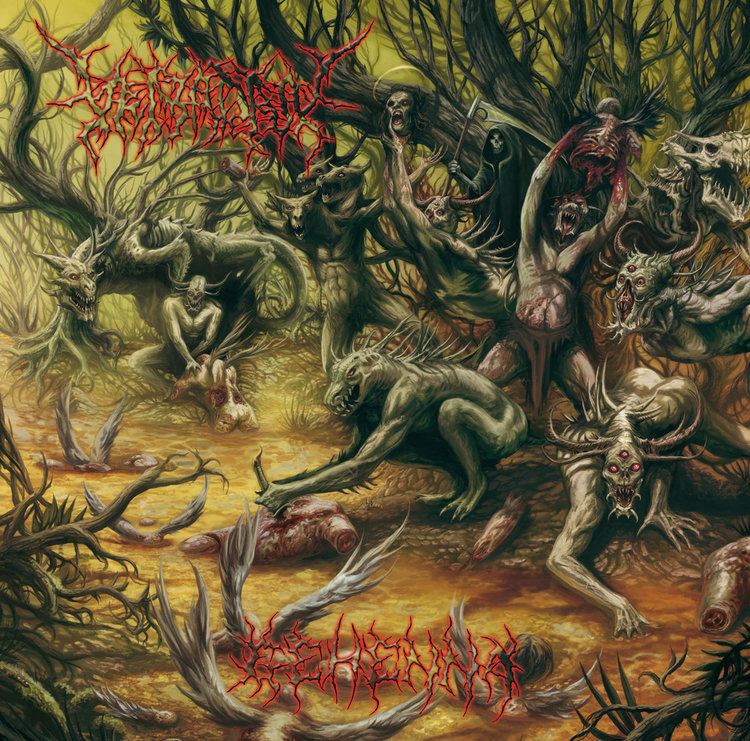 | ||
Similar Tophet, Kidron Valley, Mount Zion, Calvary, Old City | ||
Slipknot gehenna audio
Gehenna, (/ɡɪˈhɛnə/; גיא בן הינום Ancient Greek: γέεννα), from the Hebrew Gehinnom (Rabbinical: גהנום/גהנם), is a small valley in Jerusalem and the Jewish and Christian analogue of hell. The terms are derived from a place outside ancient Jerusalem known in the Hebrew Bible as the Valley of the Son of Hinnom (Hebrew: גֵיא בֶן־הִנֹּם or גיא בן-הינום, Gai Ben-Hinnom). The Valley of Hinnom is the modern name for the valley surrounding Jerusalem's Old City, including Mount Zion, from the west and south. It meets and merges with the Kidron Valley, the other principal valley around the Old City, near the southeastern corner of the city.
Contents
- Slipknot gehenna audio
- Gehenna where death lives trailer 2016 saipan
- Etymology
- Geography
- Archaeology
- Hebrew Bible
- Targums
- Rabbinical Judaism
- New Testament
- Translations in Christian Bibles
- Quran
- References
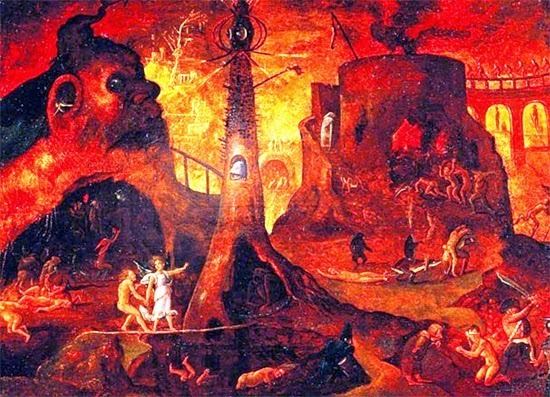
In the Hebrew Bible, Gehenna was initially where some of the kings of Judah sacrificed their children by fire. Thereafter it was deemed to be cursed (Jer. 7:31, 19:2-6).

In Jewish Rabbinic literature, and Christian and Islamic scripture, Gehenna is a destination of the wicked. This is different from the more neutral Sheol/Hades, the abode of the dead, although the King James Version of the Bible usually translates both with the Anglo-Saxon word Hell.

In the King James Version of the Bible, the term appears 13 times in 11 different verses as "Valley of Hinnom", "Valley of the son of Hinnom" or "Valley of the children of Hinnom."
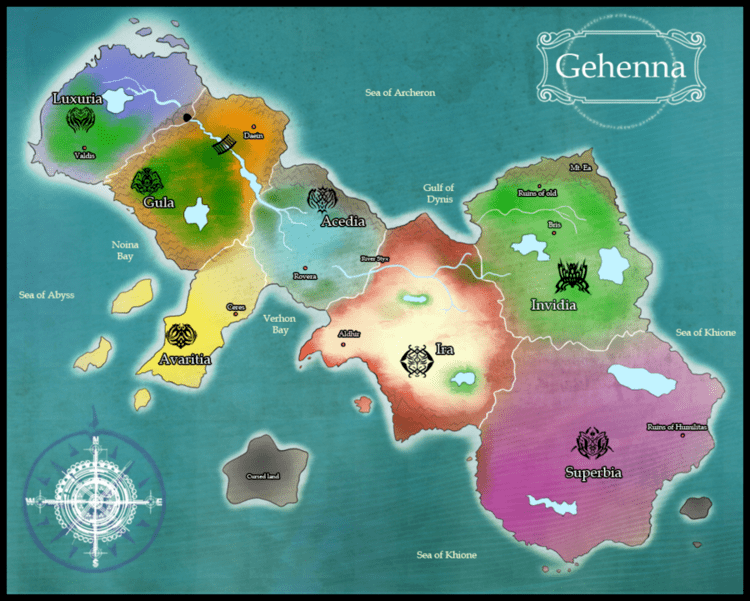
Gehenna where death lives trailer 2016 saipan
Etymology
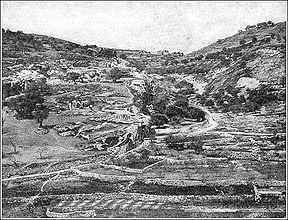
English "Gehenna" represents the Greek Ge'enna (γέεννα) found in the New Testament, a phonetic transcription of Aramaic Gēhannā (ܓܗܢܐ), equivalent to the Hebrew Ge Hinnom, literally "Valley of Hinnom".
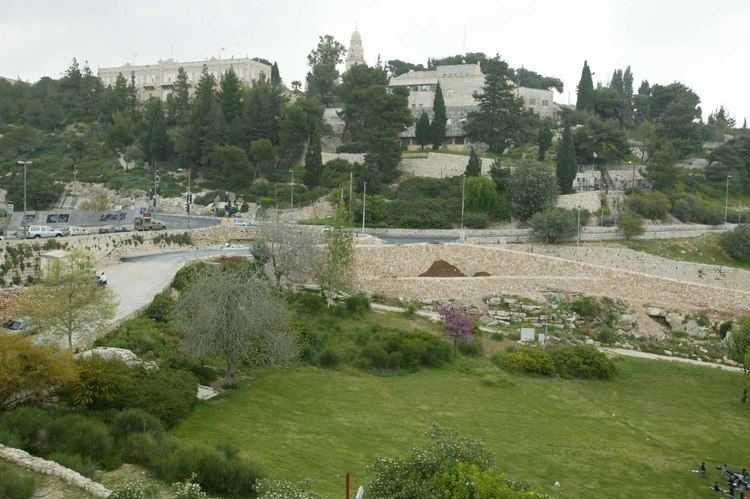
This was known in the Old Testament as Gei Ben-Hinnom, literally the "Valley of the son of Hinnom", and in the Talmud as גהנם Gehinnam or גהנום Gehinnom.
Citation: In the New American Standard Bible, Joshua 15:8 (see below) notes, "Then the border went up the valley of Ben-Hinnom (גֵּיא בֶן־הִנֹּם, Gei ben Hinnom) to the slope of the Jebusite on the south (that is, Jerusalem); and the border went up to the top of the mountain which is before the valley of Hinnom to the west, which is at the end of the valley of Rephaim toward the north." Joshua is describing the boundaries of the tribe of Judah.
Keil and Delitzsch note in their Commentary on the Old Testament, "It (the boundary of the tribe of Judah) then went up into the more elevated valley of Ben-Hinnom, on the south side of the Jebusite town, i.e., Jerusalem (see at Jos 10:1), and still farther up to the top of the mountain which rises on the west of the valley of Ben-Hinnom, and at the farthest extremity of the plain of Rephaim towards the north. The valley of Ben-Hinnom, or Ben-Hinnom (the son or sons of Hinnom), on the south side of Mount Zion, a place which was notorious from the time of Ahaz as the seat of the worship of Moloch (Kg2 23:10; Ch2 28:3; Ch2 33:6; Jer 7:31, etc.), is supposed there, but of whom nothing further is known (see Robinson, Pal. i. pp. 402ff.)." This reference in the Book of Joshua is the first mention in the Old Testament of this "Valley of the Sons of Hinnom".
This valley, as Keil and Delitzsch note, is "on the south side of the Jebusite town, i.e., Jerusalem." This valley is mentioned five times in the Book of Jeremiah (7:31,32 19:2,6 32:35) as the place in which the people would "burn their sons and daughters in the fire" as part of the worship of Moloch as noted by Keil and Delitzsch.
In the Qur'an, Jahannam (جهنم) is a place of torment for sinners and non-believers, or the Islamic equivalent of Hell.
Geography
The exact location of the Valley of Hinnom is disputed. Older commentaries give the location as below the southern wall of ancient Jerusalem, stretching from the foot of Mount Zion eastward past the Tyropoeon to the Kidron Valley. However the Tyropoeon Valley is usually no longer associated with the Valley of Hinnom because during the period of Ahaz and Manasseh, the Tyropoeon lay within the city walls and child sacrifice would have been practiced outside the walls of the city. Smith (1907), Dalman (1930), Bailey (1986) and Watson (1992) identify the Wadi ar-Rababi, which fits the data of Joshua that Hinnom valley ran east to west and lay outside the city walls. According to Joshua, the valley began at En-rogel. If the modern Bir Ayyub is En-rogel, then Wadi ar-Rababi, which begins there, is Hinnom.
Archaeology
Child sacrifice at other Tophets contemporary with the Bible accounts (700–600 BC) of the reigns of Ahaz and Manasseh have been established, such as the bones of children sacrificed at the Tophet to the goddess Tank in Phoenician Carthage, and also child sacrifice in ancient Syria-Palestine. Scholars such as Mosca (1975) have concluded that the sacrifice recorded in the Hebrew Bible, such as Jeremiah's comment that the worshippers of Baal had "filled this place with the blood of innocents", is literal, while Mark Smith has stated that in the seventh century child sacrifice was a Judean practice performed in the name of Yahweh. J. Day, Heider, and Mosca believe that the Molek cult took place in the valley of Hinnom at the Topheth No archaeological evidence such as mass children's graves has been found, however it has been suggested that such a find may be compromised by the heavy population history of the Jerusalem area compared to the Tophet found in Tunisia. The site would also have been disrupted by the actions of Josiah "And he defiled Topheth, which is in the valley of the children of Hinnom, that no man might make his son or his daughter to pass through the fire to Molech." (2 Kings 23). A minority of scholars have attempted to argue that the Bible does not portray actual child sacrifice, but only dedication to the god by fire; however, they are judged to have been "convincingly disproved" (Hay, 2011).
Hebrew Bible
The oldest historical reference to the valley is found in Joshua 15:8, 18:16 which describe tribal boundaries. The next chronological reference to the valley is at the time of King Ahaz of Judah who sacrificed his sons there according to 2 Chron. 28:3. Since his legitimate son by the daughter of the High Priest Hezekiah succeeded him as king, this, if literal, is assumed to mean children by unrecorded pagan wives or concubines. The same is recorded of Ahaz' grandson Manasseh in 33:6. There remains debate about whether the phrase "cause his children to pass through the fire" meant a religious ceremony or literally child sacrifice.
The Book of Isaiah does not mention Gehenna by name, but the "burning place" 30:33 in which the Assyrian army is to be destroyed, may be read "Topheth", and the final verse of Isaiah which concerns of those that have rebelled against God, Isaiah 66:24.
In the reign of Josiah a call came from Jeremiah to destroy the shrines in Topheth and to end the practice Jeremiah 7:31-32, 32:35. It is recorded that King Josiah destroyed the shrine of Molech on Topheth, to prevent anyone sacrificing children there in 2 Kings 23:10. Despite Josiah's ending of the practice, Jeremiah also included a prophecy that Jerusalem itself would be made like Gehenna and Topheth (19:2-6, 19:11-14).
A final purely geographical reference is found in Neh. 11:30 to the exiles returning from Babylon camping from Beersheba to Hinnom.
Targums
The ancient Aramaic paraphrase-translations of the Hebrew Bible known as Targums supply the term "Gehinnom" frequently to verses touching upon resurrection, judgment, and the fate of the wicked. This may also include addition of the phrase "second death", as in the final chapter of the Book of Isaiah, where the Hebrew version does not mention either Gehinnom or the Second Death, whereas the Targums add both. In this the Targums are parallel to the Gospel of Mark addition of "Gehenna" to the quotation of the Isaiah verses describing the corpses "where their worm does not die".
Rabbinical Judaism
The picture of Gehenna as the place of punishment or destruction of the wicked occurs frequently in the Mishnah in Kiddushin 4.14, Avot 1.5; 5.19, 20, Tosefta t. Bereshith 6.15, and Babylonian Talmud b.Rosh Hashanah 16b:7a; b. Bereshith 28b. Gehenna is considered a Purgatory-like place where the wicked go to suffer until they have atoned for their sins. It is stated that the maximum amount of time a sinner can spend in Gehenna is one year. There are also four people who do not get a share in Olam Ha-Ba. Those people are Doeg the Edomite, Ahitophel, Balaam, and Gehazi.
Due to Jewish religious tradition regarding the bloodiness of its history, Gehenna became a metonym for "Hell" or any similar place of punishment in the afterlife.
The traditional explanation that a burning rubbish heap in the Valley of Hinnom south of Jerusalem gave rise to the idea of a fiery Gehenna of judgment is attributed to Rabbi David Kimhi's commentary on Psalm 27:13 (ca. 1200 AD). He maintained that in this loathsome valley fires were kept burning perpetually to consume the filth and cadavers thrown into it. However, Hermann Strack and Paul Billerbeck state that there is neither archaeological nor literary evidence in support of this claim, in either the earlier intertestamental or the later rabbinic sources. Also, Lloyd R. Bailey's "Gehenna: The Topography of Hell" from 1986 holds a similar view.
There is evidence however that the southwest shoulder of this valley (Ketef Hinnom) was a burial location with numerous burial chambers that were reused by generations of families from as early as the seventh until the fifth century BC. The use of this area for tombs continued into the first centuries BC and AD. By 70 AD, the area was not only a burial site but also a place for cremation of the dead with the arrival of the Tenth Roman Legion, who were the only group known to practice cremation in this region.
In time it became deemed to be accursed and an image of the place of destruction in Jewish folklore.
Eventually the Hebrew term Gehinnom became a figurative name for the place of spiritual purification for the wicked dead in Judaism. According to most Jewish sources, the period of purification or punishment is limited to only 12 months and every Sabbath day is excluded from punishment. After this the soul will ascend to Olam Ha-Ba (the world to come), be destroyed, or continue to exist in a state of consciousness of remorse.
New Testament
In the synoptic Gospels Jesus uses the word Gehenna 11 times to describe the opposite to life in the Kingdom (Mark 9:43-48). It is a place where both soul and body could be destroyed (Matthew 10:28) in "unquenchable fire" (Mark 9:43).
Translations in Christian Bibles
The New Testament also refers to Hades as a place distinct from Gehenna. Unlike Gehenna, Hades typically conveys neither fire nor punishment but forgetfulness. John's vision in the Book of Revelation describes Hades being cast into the Lake of Fire (Revelation 20:14). The King James Version is the only English translation in modern use to translate Sheol, Hades, Tartarus, and Gehenna as Hell. The New International Version, New Living Translation, New American Standard Bible (among others) all reserve the term hell for the translation of Gehenna, transliterating Hades as a term directly from the equivalent Greek term.
Treatment of Gehenna in Christianity is significantly affected by whether the distinction in Hebrew and Greek between Gehenna and Hades was maintained:
Translations with a distinction:
Translations without a distinction:
Many modern Christians understand Gehenna to be a place of eternal punishment called hell. Annihilationists understand Gehenna to be a place where sinners are eventually utterly destroyed, not tormented with literal pain forever. Christian Universalists, who believe that God will eventually reconcile all souls to himself, interpret the New Testament references to Gehenna in the context of the Old Testament and conclude that it always refers to the imminent divine judgment of Israel and not to everlasting torment for the unsaved.
The Valley of Hinnom is also the traditional location of the Potter's Field bought by priests after Judas' suicide with the "blood money" with which Judas was paid for betraying Jesus.
Quran
The name given to Hell in Islam, Jahannam, directly derives from Gehenna. The Quran contains 77 references to Gehenna (جهنم), but no references to Hades (هيدز).
